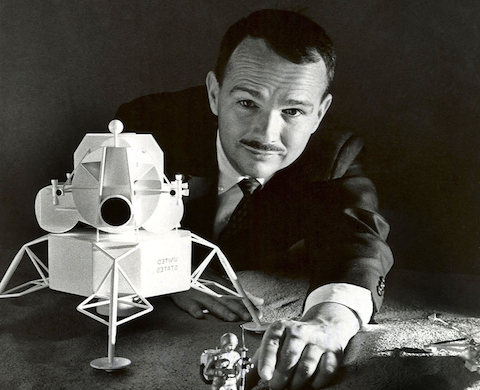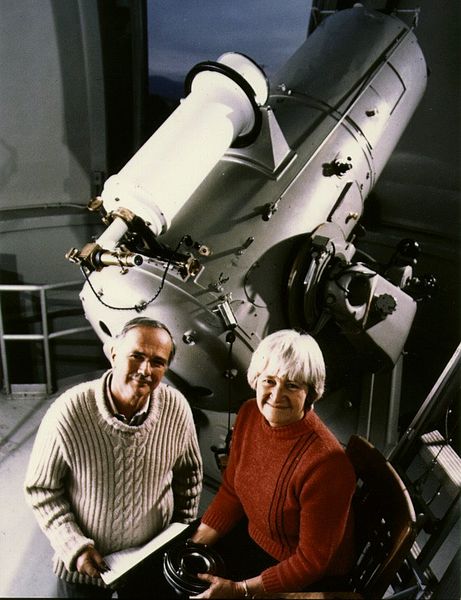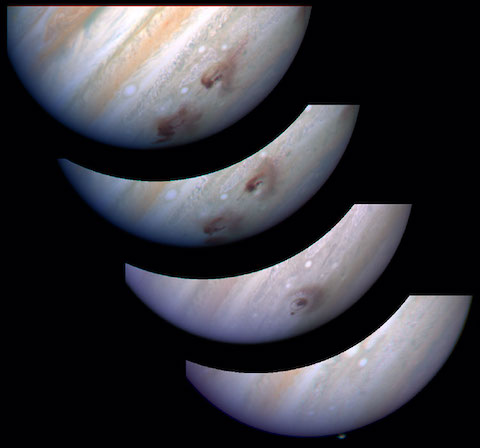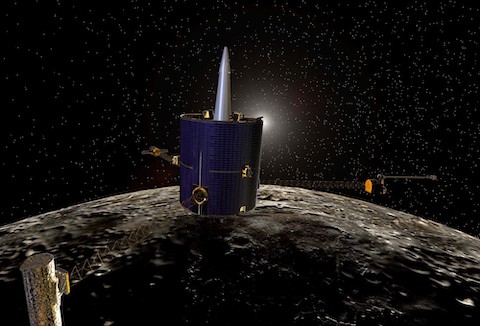
Dr. Gene Shoemaker mapped the moon, trained astronauts and discovered more than 800 asteroids. He was also the first person to go to the moon… and stay there.
Shoemaker started his career with a bang, proving with his Princeton dissertation that the mile-wide Barringer Crater in Arizona, previously attributed to volcanic activity, was in fact the result of a meteorite impact.
Soon after, he founded the astrogeology program of the U.S. Geological Survey, in part to better understand the potential threat of future meteorites.
He led a team to map the craters of the moon, then was called to advise the Apollo space program, training its astronauts for their lunar geological surveys.
He and his wife Carolyn co-discovered the Shoemaker-Levy 9 comet and predicted its impact with Jupiter, which the world watched through the Hubble Telescope.
At 64, he received the National Medal of Science, capping a career of awards.
At 69, while exploring a meteorite crater in Australia, Shoemaker’s life was cut short in a car crash.
He often said his one regret was not going to the moon to experience its geology himself. So NASA decided to grant his wish.
They placed a small capsule of his ashes inside the Lunar Prospector research spacecraft. It orbited the moon for 18 months of exploration, then deliberately crash-landed into a lunar crater where Shoemaker is now interred, the first human remains on the moon.
Background
Synopsis: Only one human has currently been interred on a celestial body besides Earth: the ashes of planetary scientist Gene Shoemaker were sent to the Moon! Most of us recognize his name from the Shoemaker-Levy comet that scarred Jupiter’s surface in 1994. During his life, he studied impact craters on Earth and in space, developed the field of astrogeology, trained astronauts, and participated in the discovery of 820 asteroids and 183 minor planets. But his lifetime goal was to travel to the moon. He finally got his wish posthumously.
- Gene Shoemaker’s life was filled with exploration and science; he was always curious about Earth and space.
- Born in Los Angeles, California, in 1928, he spent childhood winters with his schoolteacher mother in Buffalo, New York. But during summers, the family would travel to join his father, a Civilian Conservation Corps director of education in Wyoming.
- Gene began collecting minerals in the fourth grade. As a teenager, he took a summer job as an apprentice lapidary, cutting and polishing rocks.
- He graduated from high school in California in just 3 years and started at Caltech at the age of 16.
- In 1950, he went to work at the United States Geological Survey (USGS) on projects related to uranium mineralization and volcanic processes. These studies took him to Barringer Crater in Northern Arizona, where he soon produced results that would shake the scientific community.
- Discovered in 1891 by Daniel Barringer, the crater was originally described as a meteor impact crater but was later described as a volcanic vent by scientists at the USGS.
- In the late 1950’s, Shoemaker made the origin of the crater the subject of his 1960 Princeton Ph.D. and determined that Barringer was correct—the crater was formed by a meteor impact.
- His research demonstrated that the 750-ft-deep (230 m) bowl with a diameter of 4000 ft (1.2 km) was generated by a projectile from space that was 150 ft (45 m) across and travelling as fast as a speeding bullet. Later, he and others proved the impact occurred about 50,000 years ago.
- His work was the first to prompt the world’s scientists to consider the potential danger of meteor impacts on Earth.

- Returning to the USGS, Shoemaker led a team that generated the first geologic map of the Moon and founded the USGS Astrogeology Research Program. He was an important NASA advisor in the preparation and execution of the Apollo space program.
- Previous scientists hypothesized that craters on Earth’s moon had been created by volcanism, but Shoemaker was convinced they were caused by a perpetual cosmic storm of meteor impacts. The Apollo missions ultimately proved him correct.
- Later, Shoemaker developed a technique to determine the relative age of planetary surfaces using the spatial density of craters.
- He was named the lunar geology principal investigator for the Apollo 11, Apollo 12, and Apollo 13 moon missions, training astronauts for moon exploration in remote deserts and planning lunar geological surveys. He also appeared as an expert commentator with Walter Cronkite during the CBS live coverage of several of the Apollo landings.
- Shoemaker’s interests shifted to tracking the cosmic objects that make planetary craters, and in 1993—with his wife Carolyn and his colleague David Levy at Caltech’s Palomar Observatory near San Diego, California—he co-discovered Comet Shoemaker–Levy 9.
- The comet had broken into a long train of fragments as large as 1.2 miles (2 km) in diameter. In 1994, the fragmented comet provided a special opportunity for humans to view multiple impacts on the side of Jupiter facing Earth observers—the first time an impact had ever been viewed by humans.
- The impact did not disappoint: to the delight of the world’s scientific community, it continued for an entire week, lasting from July 16 to July 22, 1994.
- Shoemaker is credited with co-discovering 820 asteroids and 183 minor planets in his lifetime.
- He received the National Medal of Science in 1992, along with many other lifetime accolades.

- Shoemaker resumed his interest in locating and documenting previously undiscovered impact craters around the world. It was during a crater-hunting expedition to northern Australia that he died in a head-on automobile collision on July 18, 1997. Carolyn Shoemaker survived but was severely injured in the crash.
- Shoemaker desperately wanted to become an Apollo astronaut to observe lunar geology in person, but he had an adrenal disorder known as Addison’s disease that grounded him.
- In 1995, he was quoted as saying “Not going to the Moon and banging on it with my own hammer has been the biggest disappointment in life.”
- One of his colleagues, Carolyn Porco, wanted to fulfill his wish, so she acted quickly after his death to contact NASA. They referred her to Celestis, a company pioneering in space interment.
- Up to that point, Celestis had only sent ashes into Earth orbit as spare payload on spacecraft or spent rocket stages for final burn-up upon reentry. But NASA was willing to include a tiny addition, the Luna 01 payload, to an upcoming lunar mission to honor this visionary astrogeologist.
- NASA’s Lunar Prospector spacecraft lifted off on January 6, 1998, with a unique payload: a small polycarbonate capsule containing an ounce (28 g) of Shoemaker’s ashes wrapped in a 1.5-inch (3.8 cm) square piece of brass foil.
- After completing 18 months of scientific experiments and operations, Lunar Prospector successfully detected the presence of water ice near the lunar south pole and deliberately crashed into a nearby crater, permanently interring Gene Shoemaker’s ashes in the lunar crater at the crash site.
- The brass foil wrapped around the capsule of ashes is inscribed with an image of Comet Hale–Bopp—the last comet Gene observed with Carolyn, a photo of Meteor Crater where he developed his love for astrogeology and trained astronauts, and a quote from Shakespeare:
“And, when he shall die
Take him and cut him out in little stars
And he will make the face of heaven so fine
That all the world will be in love with night
And pay no worship to the garish sun.”William Shakespeare, Romeo and Juliet, 1595

- Shoemaker will be the only human buried on a celestial body off Earth until 2021, when Celestis is scheduled to send a second memorial payload called Luna 02 to the moon.

